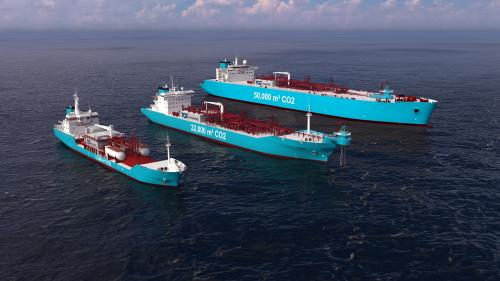The rapid growth of the carbon capture and storage (CCS) market, not to mention its transportation, is opening up a wealth of business opportunities and becoming a major driver of innovation within northern Europe. And it should come as no surprise that Denmark is among the frontrunners.
“There is no doubt this emerging CCS industry is seen as important to Danish shipping as it is an opportunity for Denmark to cement its position as one of the largest maritime nations, underline our leadership within innovation and sustainability, and an opportunity to create jobs and exports – and not only from a shipping perspective but also in repurposing some of the oil and gas industry,” a spokesperson for Dan-Unity CO2, one of the partners in the Greensand CCS project, explains to TNA.
Dan-Unity was jointly formed in May 2021 by Danish shipping corporations Evergas and Ultragas for the specific purpose of liquid CO2 transportation. Considering the long gestation period for CCS projects, given the huge infrastructure investments and systemic innovations they require, the company says it’s conscious there is no quick fix but is planning for the long run.
“Going from an idea to developing a concept and strategy to actually having our own CO2 ship designs – two of which have received Approval in Principle from ABS – entering into a number of partnerships across the entire value chain and being involved in several projects all within a year is something we are proud of,” Dan-Unity comments.
Concepts
Dan-Unity unveiled the concepts for two 12,500m3 and 22,000m3 CO2 carriers, developed in collaboration with naval architects TGE Marine, in November last year, following a grant from the Danish Maritime Fund (Den Danske Maritime Fond) to support the development of new ships for CO2 transport. According to a press release at the time, it’s thought that a single 22,000m3 vessel could transport around 500,000 tons of CO2 annually were it operating between north-west Europe and the Coda Terminal near Reykjavik, a CCS hub run by Dan-Unity’s partners Carbfix that is expected to begin operations in 2026. Under the Carbfix process CO2 is dissolved into water and injected into subsurface basalts, where it reacts with the host rock and becomes permanently stored.
A notable specification of the Danish Maritime Fund’s grant was that the pre-design would incorporate ‘CO2 neutral’ propulsion, although exactly which of the alternative fuel options has yet to be determined. The company explains: “Our goal is to make these ships ‘the greenest in the world’ as it would hurt the overall proposition if we were emitting a lot of CO2 whilst trying to get rid of it. So, our ships have been designed with this in mind to accommodate all sorts of features with the main one being engines that run on sustainable fuels.
“We feel this is very important, but it is a tough task trying to read and predict the future fuel landscape; is it going to be methanol, ammonia, or something third? And whilst methanol engines do exist, and we expect ammonia engines to be ready at around 2025, it is still a bit of a “chicken and egg” situation with the supply of these fuels.”
Awaiting orders
The company says it’s essentially ready to push the button and start building the vessels at any moment, depending on when the projects reach a final investment decision and shipbuilding contracts can be signed.
“We get feedback from the yards that the approximate lead time is 28 months from signing, so we try to emphasise as much as possible that the shipping solution should be thought into the entire project as early as possible. The actual ship construction is possibly the item with the longest lead time and hence it is not something which can be solved as an afterthought. So, for all the projects wanting to store CO2 at the beginning of 2025, a decision will have to be made soon if we are to be ready in time for that.”
As to whether those vessels might be built in European or Asian yards, Dan-Unity is keeping its options open, however discussions have been held on both continents. “In general, we are seeing a lot of interest from yards wanting to be involved in bringing these first-of-a-kind ships to life, which is great to experience. It is conceivable they could be built in Europe, but a final decision has not been made yet, and if this really takes off it is possible we will use more than one yard to meet the demand.”




